10 January 2020
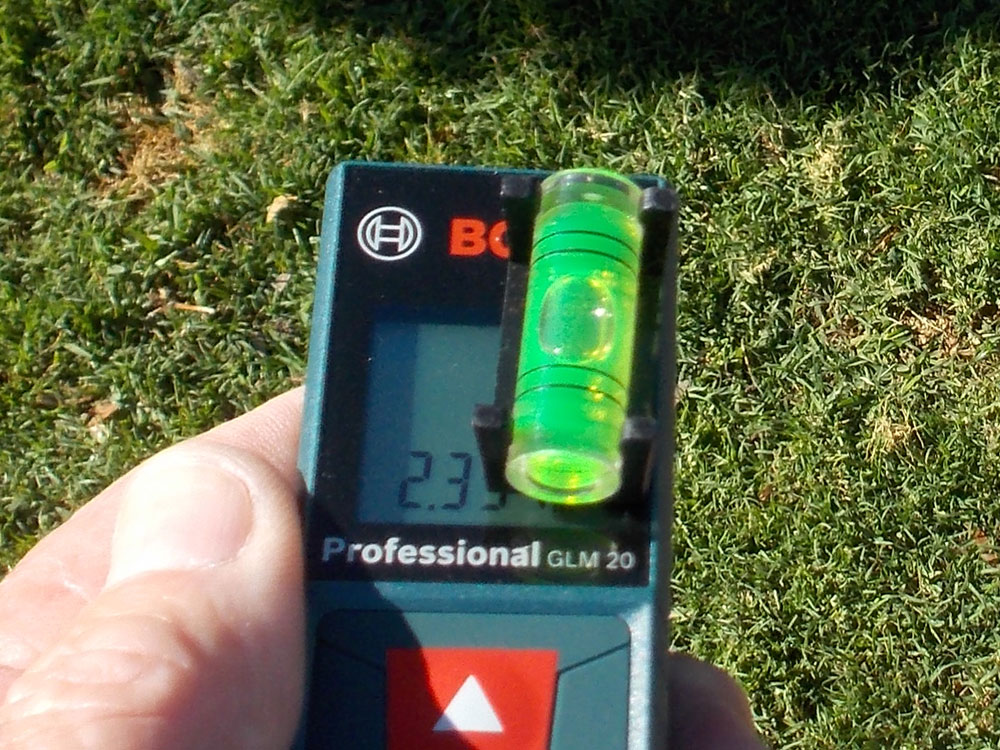
Some tips on how to use a laser measure
A laser measure is one of the best tools to have in the home as it allows quick and easy measurements of distances with a high degree of accuracy… the model featured here measures from 150mm up to about 20m, with an accuracy of about 3mm at the latter distance. But read on… there are a couple of caveats to these specifications, and some tips and tricks to ensure greatest accuracy.
The model featured here is a comparatively basic but very useful tool – it was on a special recently at Mica. Some laser measures can be used to measure and store a number of parameters such as length, width (and then calculate area), slant height, and so on. This instrument measures distance and is extremely easy to use – and extremely useful.
Here goes…
Cautions and advice:
First…
A word of caution… NEVER
point any laser tool at a person or animal… or look into the beam yourself. You
could cause serious injury to the eyes – and in extreme cases, even blindness.
This is NOT a toy.
Second
Do not use a laser in explosive environments such as where flammable liquids,
gases and dust are present… a laser is a very high intensity concentrated beam
of light and can ignite flammable fumes of dust.
Third
This tool is rated to measure up to about 20m, but this can be affected by a
number of factors such as how well the laser is reflected off the target
surface (a dull rough surface will not reflect the beam as well as a flat
reflective surface – more about this below), the amount of ambient light, the
temperature, and the amount of dust in the air. The manufacturer states that in
unfavourable conditions like those just mentioned and/or operating well outside
of the optimum +-25°C (though it can be operated in temperatures ranging from
-10°-+40°C) the tool might deviate by about 7mm per 15m. In favourable
conditions, a deviation of +-0.05mm/m should be taken into account.
Having said all that in the vast majority of situations, you will get an entirely acceptable readout to allow you to accurately calculate lengths of fencing or amounts of building material required, area to be painted, and hence the amount of paint required, and so on.
First of all, let’s look at how a laser measure works…
Without getting too deeply into the subject, a laser uses physics and light to calculate distances. There are two precision optical components on a laser measure – the laser beam outlet, and the reception lens. When you press the button, the laser beam outlet emits a very concentrated laser beam that has very little ‘blooming’ – this is what scientists refer to as a beam of light spreading, becoming ever wider as it gets further from the emitter. This concentrated beam, which results in a bright red dot on the target surface, hits the target and is reflected back to the device where it passes into the reception lens.
Electronic circuitry in the device then uses the phase-shift method to calculate the difference in time from when the laser beam was emitted, to when it returned – and then uses that time difference to calculate the distance, which it then displays on a digital readout. In passing light is made up of waves, which is why the laser will continuously display changing readouts until it is at rest. That, very simply, is how a laser works – not that you need to worry about it, the important thing being that it does work – and work very well.
A close-up of the laser’s precision optics. The laser beam outlet is on the right and the reception lens is on the left. When the laser is on, this is NEVER the direction in which you should be viewing it.
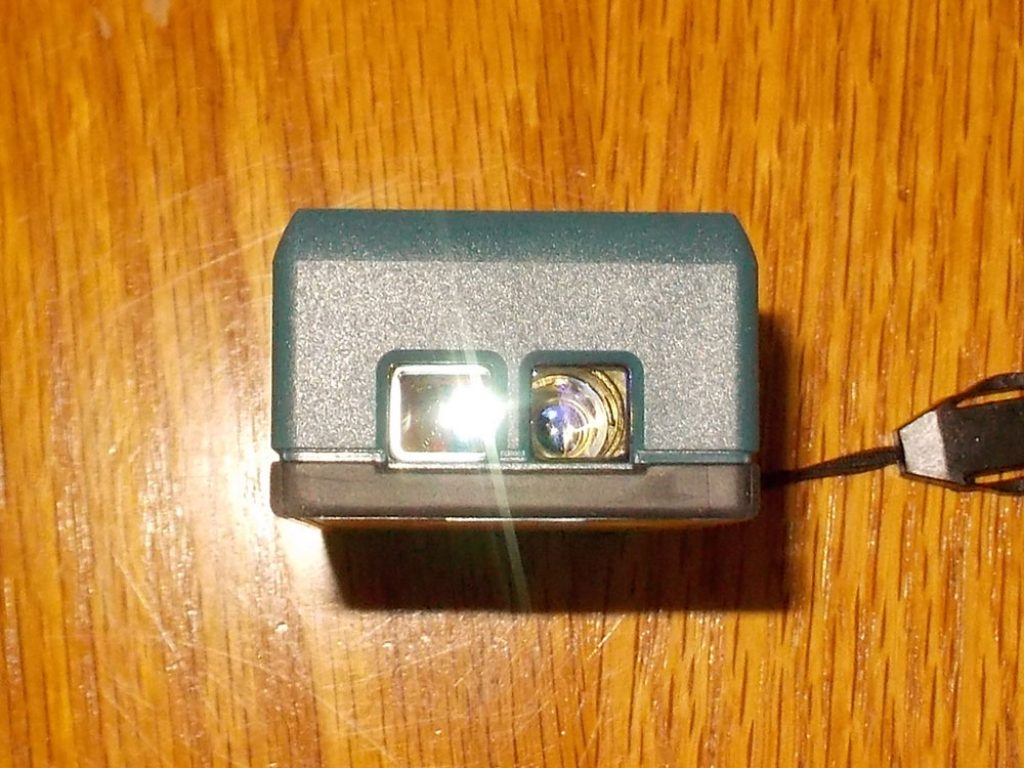
Why laser?
Other than the fact that lasers require batteries whereas tape measures do not,
laser tape measures have a number of advantages over tape measures…
- They are (subject to being used within the parameters set out by the manufacturers) pretty much immune to temperature and light variations (where they may be less accurate in very bright light conditions), whereas a very long metal tape measure is likely to give different measures in extremely hot or extremely cold weather – but this is only really a concern over very long distances of many metres.
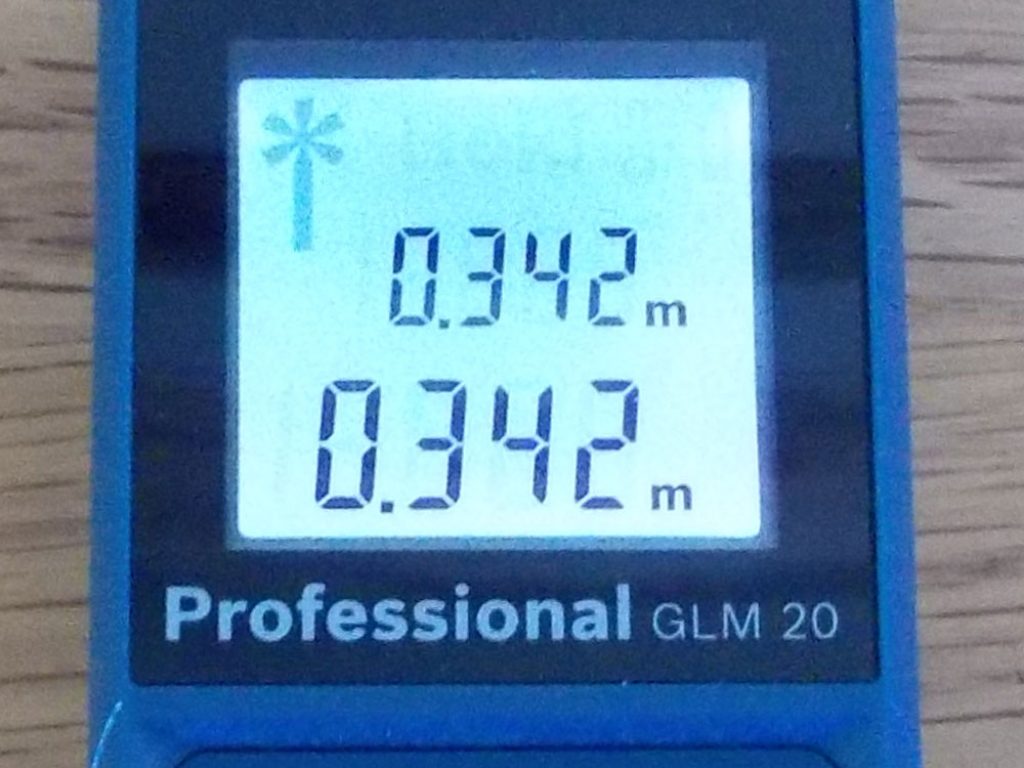
- Lasers are easy to read – instead of having to read off graduations as on a tape measure, the measurement is clearly there in numerals.
- Laser measures avoid the inaccuracies that can be caused by a twisted or sagging tape measure – again, this might be factor only over very long distances, but can be a factor affecting accuracy.
- With a laser measure you do not need to mount a ladder to measure floor to ceiling of other very long or distances to other hard-to-reach points… such as a far wall or some other surface.
- In the case of the last-mentioned advantage just above, when using a laser measure you do not need a helper to hold the far end of a tape against a surface.
Having said all that, remember, a tape measure is very useful must-have in the home and is an ideal measuring device for a vast range of applications – everything from straight distances to diameters and circumferences of pots and so on.
Here are some tips on using a laser measure…
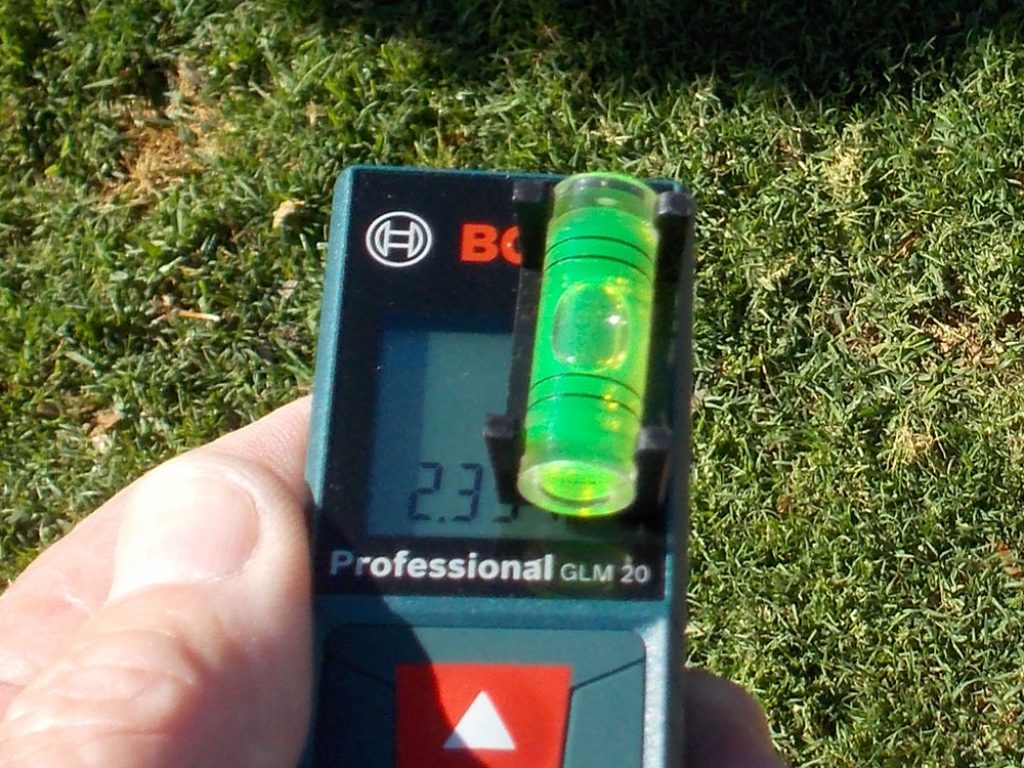
That’s the spirit – use a level
If you are measuring down a slope you may be wanting to measure the horizontal distance and not the slope itself… for example from the top of the garden to a boundary wall and in such cases it is important that you hold the laser measure level. A good way to do this is to place a spirit level vial or line level on the laser instrument and centre the bubble – as shown here. Then take your reading.
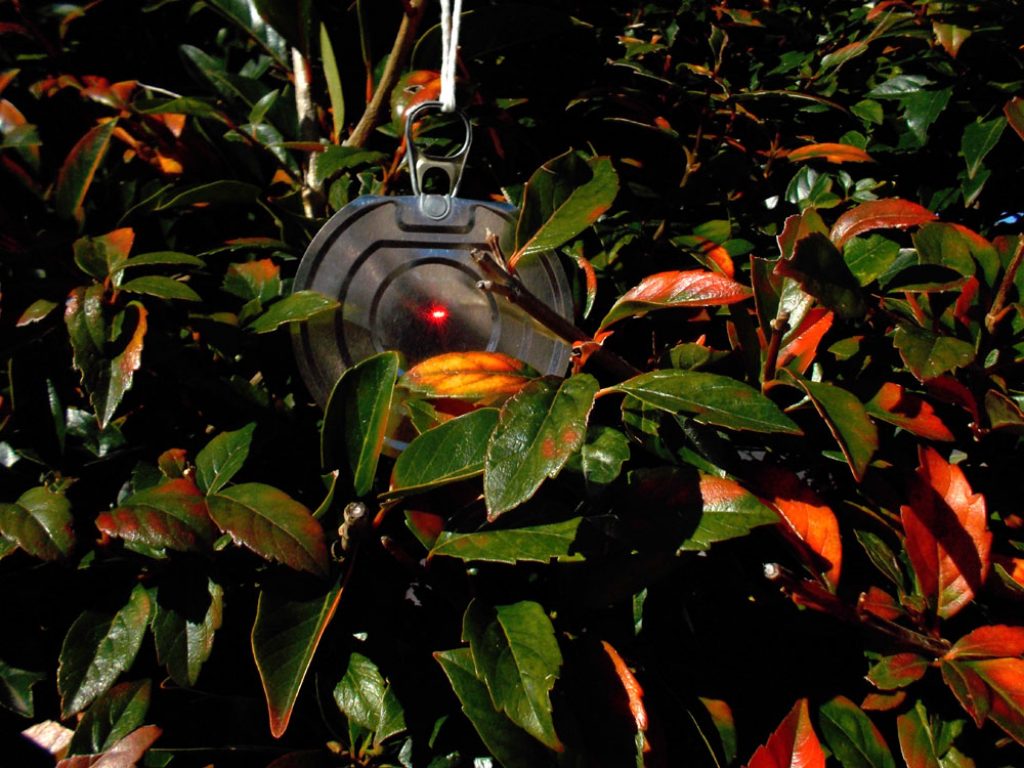
On target!
There are times when the surface that you are aiming at is very non-reflective, or the ambient light is very bright, or as in this case, the surface is obscured by foliage. That’s when you need a target that will reflect the laser beam back to the reception lens.
In this case we used a lid from a can of pet food suspended on a loop of string and hung on a branch. Now we could accurately measure from the point of measurement to the lid, and then simply add – using a steel rule – the gap between the target and the totally obscured wall behind it. Job done!
Keep it clean
Laser measures use
precision optics to do their job so as much as it stands to reason to keep them
clean, it bears emphasising…keep them clean using a soft cloth to wipe the lens
clear of any dust or debris. To help keep it clean, store it in a small bag – a
sunglasses bag is ideal.
Store them separately
Finally, if you are not using your laser measure for long periods, remove the
batteries from the instrument… over time they may slowly discharge and need to
be replaced just when you want to use the measure, and if they weep, they could
damage the instrument’s battery contacts and battery compartment.